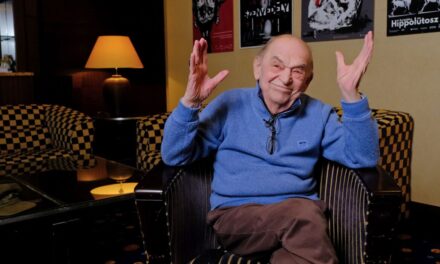A new application shows Hungarian-related places in America.
The Hungary Foundation has been a bridge between America and Hungary since 2013, and its successful development is the HuGo application, recognized with a special award from the Hungarian Marketing Association, which marks Hungarian-related places in America.
According to the head of the foundation, Anna Smith Lacey, there is huge potential in connecting the American Hungarian past and present, who revealed where the idea came from and what the purpose of the development was:
"During our research grants and supported cultural programs, we came across Hungarian footprints in America step by step, but there was still no common platform where we could find all Hungarian-related locations. When asked about the presence of Hungarians in America, the traditional, historical focal points came to mind: Ohio, Pennsylvania, New Jersey, New York. But the more I traveled, the clearer it became that there is no state in the USA where Hungarians have not made a lasting impression, where there is no Hungarian thread. The historical memory of one of the first American-Hungarian connections is preserved by the Hungarian military commander and nobleman Mihály Fabriczy Kováts, who was a hussar colonel in the American War of Independence. He is also called the father of American military cavalry. The hussar - as a historical icon - is a well-known and recognized symbol of the love of freedom and heroism of Hungarians in America. This is how the idea of the HuGo application was born, but it took years to adapt the concept to today's version," said Anna Smith Lacey.
The head of the foundation reminded: before that, everyone received information from acquaintances, friends or local Hungarian mailing lists and organizations about where there is a community event, where you can get cottage cheese, sausage or where a Hungarian-speaking dentist works. This database is now displayed on a downloadable map.
HuGo is also easily accessible to all Americans interested in Hungarian culture.
For those who claim to be Hungarian due to their ancestry, but also for those who have already visited our country, returned to America with fond memories, and would like to eat a cherry pie in Chicago, or go to a Liszt concert or a dance hall.
Anna Smith Lacey said: uploading is done by the community, who can also comment and report incorrect data. Users blessed with a competitive spirit can monitor how many of all the locations are their own per state, and how many states they have placed points on the map.
"We regularly check for possible errors on the admin interface. A few weeks ago we reached the ten thousandth download. They use the application in browser mode. We have approximately 3,200 registered users, that's how many contribute to HuGo's content as active uploaders. In two years, we built a knowledge community of several thousand, which is a new dimension on the American Hungarian scene. There are more than 1,700 Hungarian-related points on the map, a few in almost every state. The application is used by Hungarian scholarship recipients, American diplomats in preparation, so Americans, Hungarians and American Hungarians alike".
Among the seven categories, the most popular one is historical, with 431 uploads, but it fits a lot: from stained glass windows made by Hungarians to memorial plaques to street names, the selection is huge.
The least is in the official section (39 points), where consulates and embassy buildings are marked. The most frequent uploads are events and camps, new content is uploaded here on a weekly basis, since the organizers see that as soon as the event appears in the application, thousands of users receive notifications about it. No diaspora organization has such a reach.
Many American Hungarian entrepreneurs are also starting to use HuGo, so uploads about mobile restaurants, Hungarian-speaking accountants, doctors, and lawyers are also coming in. The places that few people know about are surprising, for example, there is a gorge in Oregon named after a Hungarian mountaineer, a state rarely inhabited by Hungarians.
"I really like the medieval Nekcsei Bible, which is a priceless relic of Hungarian book art from the Anjou period and is now in the Bible collection of the Library of Congress in Washington, a real curiosity. Another favorite of mine is Árpádhon, Louisiana, which is home to the largest rural historical community. While Hungarians were typically concentrated in northern cities, this is a XIX. a Hungarian settlement built around a southern strawberry farm in the 19th century," said Anna Smith Lacey.
HuGo was not even two years old when it won the special award of the Hungarian Marketing Association.
We also receive a lot of positive feedback from users, and technical ones are constantly forwarded to the developers. Perhaps the most serious feedback is that other diaspora communities have contacted Anna Smith Lacey: Spaniards, Canadians, Australians want something similar. Their goal is for HuGo to reach as many people as possible and to make as many undiscovered Hungarian-related places and programs visible as possible. A HuGo guided tour has already started in New York on an experimental basis, and this would be developed for Washington, Chicago, Hollywood and other big cities. They see a lot of potential in connecting the American Hungarian past and present.
Cover image: The application is getting more and more popular
Source: YouTube













